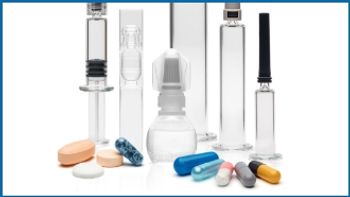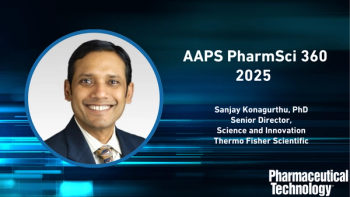
- Pharmaceutical Technology-08-01-2010
- Volume 2010 Supplement
- Issue 3
Contract R&D and Clinical Materials Outsourcing in Emerging Markets
As emerging markets become increasingly important for the pharmaceutical majors, companies are re-evaluating their outsourcing strategies. This article is part of the 2010 Outsourcing Resources special issue.
The role of emerging markets in pharmaceutical outsourcing is evolving as the strategic importance of these markets is increasing, based on strong current and projected growth. Historically, outsourcing in select emerging markets such as India and China was primarily centered on chemical production for raw materials and early (i.e., non-good manufacturing practice (GMP)) intermediates. But as time progressed, outsourcing activities expanded to include production of advanced intermediates (i.e., GMP intermediates) and finished active pharmaceutical ingredients (APIs), particularly for generic drugs and drugs late in their product life cycle, where low-cost production is a consideration. Although those activities and functions are still important, the potential for outsourcing in emerging markets is moving beyond low-cost chemical production to other parts of the drug development and pharmaceutical value chain.
JGI/TOM GRILL, BLEND IMAGES, GETTY IMAGES
Emerging-market strength
The pharmaceutical majors' strategic shift to emerging markets relates to those markets' strong growth. The global prescription-pharmaceutical market was valued at $837 billion in 2009, according to an April 2010 analysis by the market research firm IMS Health. Led by growth in emerging markets, the global prescription-drug market increased 7% in 2009, up from 4.8% growth in 2008. IMS projects that global pharmaceutical sales growth will increase 4–6% in 2010 and will increase at a 5–8% compound annual growth rate during the next five years, when the market is projected to reach $1.1 trillion in 2014.
Growth in the pharmerging markets, defined by IMS to include Brazil, Russia, India, China, Turkey, Mexico, and South Korea, will be more than double overall pharmaceutical industry growth. Pharmerging markets are expected to grow at a 14–17% pace through 2014, compared with only 3–6% growth in the developed markets. Relating these percentages to absolute growth, the aggregate growth through 2014 from pharmerging markets will be similar to the growth experienced in developed markets; both will be around $120–140 billion. This projected parity of aggregate growth compares with growth during the past five years of $69 billion in pharmerging markets and $126 billion in developed markets.
Emerging-market strategy
Part of the focus of the pharmaceutical majors' activities in emerging markets has been to expand into these markets with locally based companies that have manufacturing, supply, and distribution networks in their domestic markets, as well as in other markets in India, China, South America, and Central and Eastern Europe. The focus is largely on established products—generic drugs or innovator drug products that may be late in their product life cycle—reflecting the lower-cost product mix that may be needed to compete effectively in those markets.
Kimberly Wagner, senior partner and managing director at The Boston Consulting Group, who spoke at the Drug, Chemical, and Associated Technologies Association's (DCAT) Business Development Forum held during DCAT Week in mid-March 2010, explained some of these differences (1). "In established markets, product strategy evolves around new chemical entities, a long innovation cycle, building a strong patent position, and seeking registration or approval of pharmaceutical products in the US and European Union," she said. "In contrast, the criteria for success in emerging markets evolve around line extensions and fixed combinations, a rapid innovation cycle, speed to market, brands, and local registration," she said. With these requirements, the emphasis in emerging markets is on local manufacturing, low-cost sourcing and manufacturing, and product registration of multiple small products that can be differentiated at a local level, explained Wagner. For established markets, the product strategy is different, marked by an emphasis on achieving higher scale in manufacturing to meet larger volumes, the use of imports from high-cost countries such as the US or countries in Western Europe, and more reliance on the global blockbuster model (1).
Company activity
Several large pharmaceutical companies' recent activities in emerging markets reflect this strategic focus on established and generic products. For example, in May 2010, Abbott (Abbott Park, IL) agreed to acquire Piramal Healthcare's (Mumbai) Piramal Healthcare Solutions business (domestic formulations) for $3.72 billion. Abbott sees the acquisition as a way to bolster its revenues in emerging markets, which currently account for approximately 20% of Abbott's pharmaceutical sales, according to a May 2010 Abbott press release. Upon completion of the deal, which is expected in the second half of 2010, Abbott estimates it will have a pharmaceutical market share in India of approximately 7%. Abbott estimates the growth of its Indian pharmaceutical business with Piramal will approach 20% annually and expects its sales in India to reach $2.5 billion by 2020. Piramal's Healthcare Solutions business is becoming part of Abbott's stand-alone Established Products Division, which Abbott formed earlier this year.
The move follows recent deals by Abbott to increase its presence in emerging markets. In May 2010, the company signed a licensing and supply agreement with the pharmaceutical company Zydus Cadila (Ahmedabad, Gujarat, India) for a portfolio of pharmaceutical products that Abbott will commercialize in 15 emerging markets. Under the agreement, Abbott gained the rights to at least 24 Zydus products and will have an option for an additional 40 products.
Other companies have made similar deals. In March 2010, AstraZeneca (London) signed a license and supply agreement with the Indian drug company and manufacturer Torrent Pharmaceuticals, under which Torrent will supply to AstraZeneca a portfolio of generic medicines for emerging markets. In 2009, GlaxoSmithline (GSK, London) partnered with India's Dr. Reddy Laboratories (Hyderabad, Andhra Pradesh, India). Dr. Reddy will manufacture and supply drugs to GSK, which will license and comarket the drugs in various countries in Africa, the Middle East, Asia-Pacific, and Latin America. In December 2009, GSK extended its strategic relationship and acquired a 19% stake in the South African pharmaceutical company Aspen PharmaCare to serve emerging markets.
Earlier this year, Pfizer (New York) formed a collaboration with India's Strides Arcolab (Bangalore, India) under which Pfizer will commercialize off-patent sterile injectable and oral products in the US. The finished dosage-form products will be licensed and supplied by Strides, Onco Laboratories, and Onco Therapies, two joint ventures between Strides and Aspen PharmaCare (Durban, South Africa), according to a January 2010 Pfizer press release. And in 2009, Pfizer partnered with two Indian pharmaceutical manufacturers: Aurobindo Pharma (Hyderabad, India) and Claris Lifesciences (Ahmedabad, India). Under the deal with Aurobindo, Pfizer acquired the rights to 55 solid oral-dose products and five sterile injectables in 70 emerging markets and will commercialize those products, according to a May 2009 Pfizer press release. Pfizer also acquired the rights to 15 generic injectables from Claris Lifesciences.
Also, sanofi-aventis (Paris) enhanced its generic-drug portfolio and position in emerging markets during the last two years with several acquisitions of generic-drug companies: Zentiva (Prague), Kendrick (Mexico City), and Medley (Campinas, Brazil). And the Japanese pharmaceutical company Daiichi Sanyko (Tokyo) acquired a majority stake in the Indian pharmaceutical company Ranbaxy Laboratories (Gurgaon, Haryana, India) in 2008.
An evolving pharmaceutical value chain
As the strategic importance of emerging markets increases, pharmaceutical companies are evaluating the full spectrum of activities in the pharmaceutical value chain in these markets, including the role of outsourcing. Historically, pharmaceutical outsourcing to emerging markets involved the commercial supply chain. Outsourcing activities involved the sourcing of raw materials and non-GMP intermediates and later progressed to include advanced intermediates and finished APIs. The type of activity that is outsourced depends on the company, the product, the stage of the product in its life cycle (i.e., generic drug or a product late in its product life cycle), and other factors. However, pharmaceutical outsourcing in emerging markets is evolving to research and development (R&D) activities.
R&D models
Examining the R&D models of the pharmaceutical majors in emerging markets provides insight into how the outsourcing paradigm may also further evolve in emerging markets. Pharmaceutical companies use several approaches: building internal R&D assets in those markets, a virtual model, creating collaborations for building, operating, and transferring R&D assets, and a partnership and risk-sharing model.
Several major pharmaceutical companies are investing to build their internal R&D capabilities in emerging markets. A prominent example is the $1-billion investment by Novartis (Basel), announced in November 2009, under which Novartis will expand its research center in Shanghai during the next five years. In 2007, GSK formed a new R&D center in China to focus on neurodegeneration disease. The R&D operations there encompass the full range of drug-development activities from drug-target identification to late-stage clinical studies and involve collaborations with research institutions in China and other countries. In 2006, AstraZeneca announced a $100-million investment for a research and innovation center in China. Roche established research operations in China in 2005 and later expanded its activities there.
Under the virtual approach, pharmaceutical majors partner with contract R&D providers. Examples include Eli Lilly's (Indianapolis) partnership with ChemExplorer (Shanghai), which began in 2003, for drug-discovery activities, including a dedicated staff of 300 scientists, and Eli Lilly's collaboration with Hutchinson MediPharma (Hong Kong) in 2007. The contract research organization (CRO) WuXi PharmaTech has partnered with several major pharmaceutical companies in R&D: Johnson & Johnson (New Brunswick, NJ) in preclinical services; Pfizer for in vitro absorption, distribution, metabolism, and excretion services; and Merck & Co. (Whitehouse Station, NJ) for chemistry-related discovery services, according to company information from WuXi PharmaTech.
Under the build, operate, and transfer model, pharmaceutical companies partner with contract service providers that serve as a foundation for making investments and developing shared assets in a particular country. Two examples illustrate that model. In 2007, Wyeth (Madison, NJ, now part of Pfizer) partnered with the CRO GVK Biosciences (GVK BIO, Hyderabad, Andhra Pradesh, India) to open the GVK BIO Wyeth Hyderabad Chemistry Center, a built-to suit research center for Wyeth, which included a team of 200 synthetic chemists, according to a 2007 GVK press release. Wyeth and GVK previously formed a collaboration in 2006. With the facility, GVK BIO assumed responsibility for designing synthetic routes for new molecules by carrying out the synthesis and characterization of target molecules for Wyeth.
Bristol-Myers Squibb (BMS, New York) partnered with the CRO and contract manufacturing organization Syngene (Bangalore, Karnataka, India), a subsidiary of the biotechnology company Biocon (Bangalore) and opened a dedicated R&D facility for BMS in March 2009. Construction on the facility began in March 2007 when BMS and Biocon entered into an agreement to develop integrated drug-discovery and development capabilities at Syngene. The facility houses 360 scientists and related staff and could accommodate as many as 450 employees. The facility spans the drug-discovery and development process from initial hit to lead optimization, early pharmaceutical development, and clinical nomination, according to March 2009 Biocon press release.
Under a partnership and risk-sharing model, pharmaceutical companies collaborate with contract service providers. Both the sponsor company and the contract service provider play a role in drug-development activities and share the risk of drug development. For example, AstraZeneca formed an R&D alliance with Torrent Pharmaceuticals in 2005. Eli Lilly formed a five-year deal with Jubilant Organosys (Nodia, Uttar Pradesh, India) for discovery services in 2006, extended that relationship in 2008, and in 2007 formed a $100-million deal with Nicholas Piramal (now Piramal Healthcare) for several preclinical candidates. Merck & Co. formed a drug-discovery pact with Advinus (Pune, Maharashtra, India) in 2006 and formed a collaboration with Ranbaxy Laboratories for development of anti-infective drugs in 2008.
As sponsor companies' model for R&D outsourcing evolves, so does the model for CROs. For example, in late April 2010, the CRO Charles River Laboratories (Wilmington, MA) agreed to acquire WuXi PharmaTech for $1.6 billion as a way for each company to enhance their capabilities in drug development. Charles River had 2009 sales of $1.2 billion: approximately 55% of its sales were in research models and services and 45% in preclinical services. WuXi had 2009 sales of approximately $270 million: 93% were in laboratory services and 7% in manufacturing services. The combined company will have sales of $1.5 billion, with 44% of its revenue in research models and services, 41% in preclinical services, and 15% in discovery services. With the acquisition, the size of Charles River will increase from approximately 8000 to 12,200 employees. WuXi's 4200 employees include 2900 scientists with advanced degrees, and 2000 of them are chemists (2).
Charles River is gaining several facilities in the acquisition: a 1-million-ft2 R&D discovery facility in Shanghai; a 253,000-ft2 discovery-chemistry facility in Tianjin, China; and a 314,000-ft2 good laboratory practice preclinical toxicology facility in Suzhou, Jiangsu, China. Charles River is also acquiring a 300,000-ft2 GMP API manufacturing facility in Jinshan, China, and a 75,000-ft2 biopharmaceutical services facility in Philadelphia, which includes biologic drug-substance manufacturing (2).
Clinical development and manufacturing
Clinical development and the related supply chain may offer the next opportunity for R&D offshoring. This part of the pharmaceutical value chain involves drug-development activities such as preformulation, formulation development, drug delivery, and drug stability. The shifting geographic footprint for clinical research is providing consideration as to whether and to what extent these drug-development functions can be developed in an outsourcing model in emerging markets. One factor to consider is the shift of clinical research from traditional developed markets to emerging markets, where recruitment rates are higher and competition for patients is lower. This shift, in turn, creates opportunities for contract manufacturing and packaging to grow in emerging markets. Aligning these activities with the locations of clinical trials offers the potential advantages of eliminating import hurdles, increasing speed, and lowering costs.
Although the outsourcing of formulation services, related service, and dose-manufacturing in emerging markets is not that common, certain contract service providers are developing their capabilities in these markets. One such example is Aptuit (Greenwich, CT), a contract drug-development company, which formed a new entity, Aptuit Laurus (Hyderabad, India), in 2007 through a phased acquisition with Laurus Labs (Hyderabad). Aptuit's strategy was to build Aptuit Laurus's development, manufacturing, and informatics capabilities to mirror the capabilities of services offered by Aptuit in North America and Europe (3).
Looking ahead
To what degree preformulation, formulation, and related services will shift to emerging markets remains to be seen. Unlike chemical production for intermediates and APIs, where outsourcing was primarily driven by cost factors, offshoring the clinical supply chain will depend on the related advantages of transferring clinical-trial material supply closer to the sites of clinical trials, and, to a degree, the role that the R&D activities of pharmaceutical companies in emerging markets will play.
References
1. P. Van Arnum, Pharm. Technol. Sourcing and Management May 2010,
2. P. Van Arnum, Pharm. Technol. 34 (6), s44–46 (2010).
3. P. Van Arnum, Pharm. Technol. Sourcing and Management Sept. 2007,
Articles in this issue
over 15 years ago
Slow Climb Backover 15 years ago
Standardized Quality Agreementsover 15 years ago
Pharma Market Trends 2010over 15 years ago
Mitigating Risk in the Supply Chainover 15 years ago
It takes a Worldover 15 years ago
Managing Expectations and Deliverables: A CMO RoundtableNewsletter
Get the essential updates shaping the future of pharma manufacturing and compliance—subscribe today to Pharmaceutical Technology and never miss a breakthrough.




